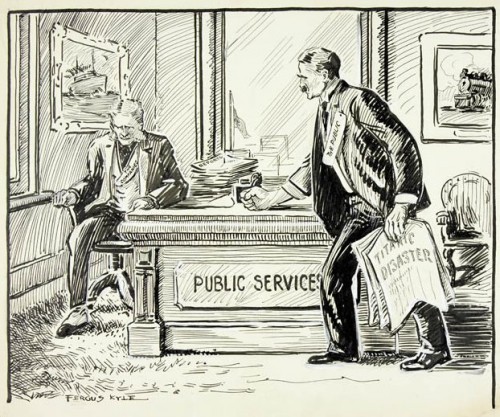Ever get in a hotel shower and turn the faucet the wrong way, getting scalded or frozen as a result? It doesn’t help when the faucet is unmarked or backwards. If a new account is correct, that’s what happened to the Titanic.
(Reuters) – The Titanic hit an iceberg in 1912 because of a basic steering error, and only sank as fast as it did because an official persuaded the captain to continue sailing, an author said in an interview published on Wednesday.
…
“They could easily have avoided the iceberg if it wasn’t for the blunder,” Patten told the Daily Telegraph.
“Instead of steering Titanic safely round to the left of the iceberg, once it had been spotted dead ahead, the steersman, Robert Hitchins, had panicked and turned it the wrong way.”
Patten, who made the revelations to coincide with the publication of her new novel “Good as Gold” into which her account of events are woven, said that the conversion from sail ships to steam meant there were two different steering systems.
Crucially, one system meant turning the wheel one way and the other in completely the opposite direction.
Once the mistake had been made, Patten added, “they only had four minutes to change course and by the time (first officer William) Murdoch spotted Hitchins’ mistake and then tried to rectify it, it was too late.”
It sounds like the steering layout violates most of Norman’s design principles (summarized here):
- Use both knowledge in the world and knowledge in the head.
- Simplify the structure of tasks.
- Make things visible: bridge the Gulfs of Execution and Evaluation.
- Get the mappings right.
- Exploit the power of constraints, both natural and artificial.
- Design for error.
- When all else fails, standardize.
Notice that these are really all about providing appropriate feedback, mental models, and robustness.
(This is a repost from Sep. 22, 2010, for the 100 year anniversary).

